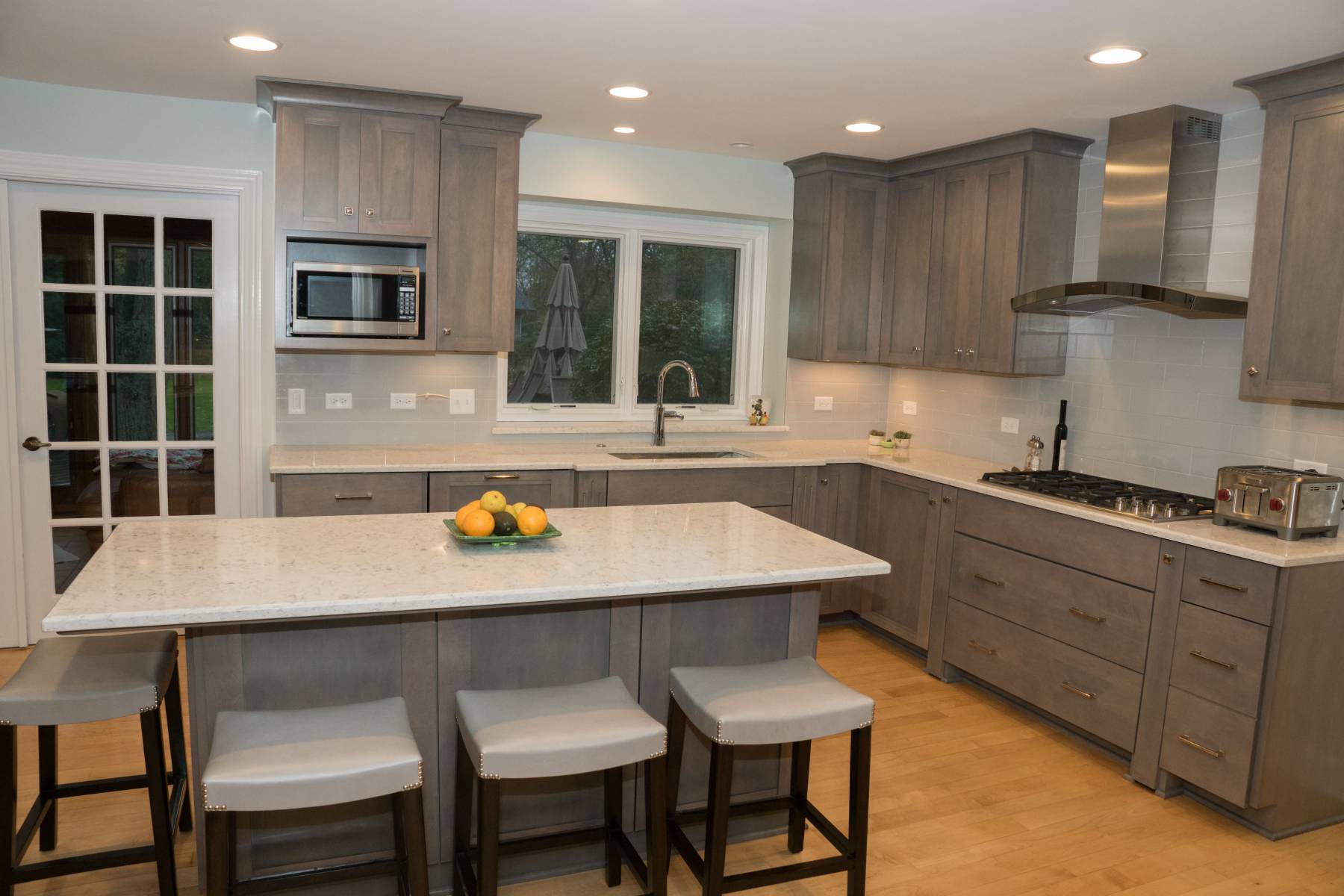Choosing the right colors for your kitchen design might seem overwhelming. From paint to appliances to flooring to cabinetry, there are seemingly unlimited color options available. And because your kitchen likely functions as the hub of your home, you’ll be seeing an awful lot of the colors you select—colors that can be difficult (and expensive) to replace if you change your mind. But a little planning and careful consideration of your personal taste can take the anxiety out of the decision-making process.
As you explore color choices, keep your design goals in mind. Your kitchen’s palette can accentuate the room’s features, create continuity with the rest of your home or evoke a particular mood. Start by looking at the other rooms in your home. Do certain colors appear frequently? Are there any that especially appeal to you? Is there a color that has worn out its welcome? Also consider whether you prefer bold hues or muted tones (or a combination of both), and whether you’re drawn to warm, cool or neutral palettes.
There are no right or wrong color choices in the kitchen; your personal preferences should direct your selections. There are, however, tools available to help you arrive at a decision. The color wheel, for example, illustrates how different colors interact: related colors, which can be paired for subtle effect, are positioned next to each other, while colors that sit opposite each other on the wheel are complementary, providing a bolder impact when combined. It can also be helpful to check out design magazines and visit home design showrooms for ideas.
 Pale gray is a popular kitchen color
Pale gray is a popular kitchen color
After you narrow down your color preferences, it’s time to begin shopping. Use your chosen color palette as inspiration as you browse through paint, counter top, backsplash, appliance, cabinet, flooring and accessory options. Take home samples of different kitchen fixture finishes for comparison. Also pick up several paint chip cards that reflect different hues in your color palette and the underlying tones of the other surfaces you’re considering.
Next, give your color samples a test run in your kitchen. Mix and match the samples until you find a grouping that works. Look at your combination in different areas of the kitchen and in different lights (and at different times of the day, since the shifting sun impacts indoor lighting). You can even test different paint colors in small swatches, applied either on the walls themselves or on poster boards that you can move around the room, to make sure you’re happy with your selections.
Once you’ve decided on a color palette, think about how you will use it. Do you want to highlight your kitchen’s architectural details with bold, complementary hues, for instance, or would you prefer to reserve the more saturated tones in your palette for creating understated accents? Just as there are thousands of colors from which to choose, there are nearly endless ways to incorporate them into your new design—but finding the perfect colors for your kitchen doesn’t have to be a daunting process.
For help with choosing kitchen colors, kitchen design ideas or a full kitchen remodel, contact Reliable Home Improvement today.
